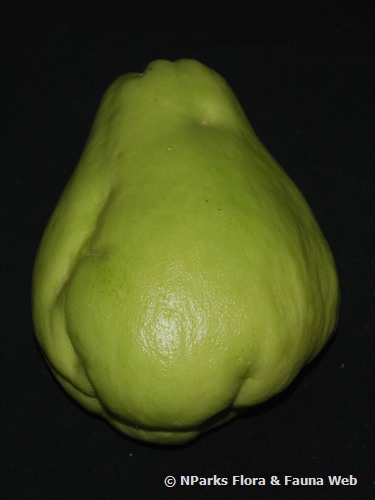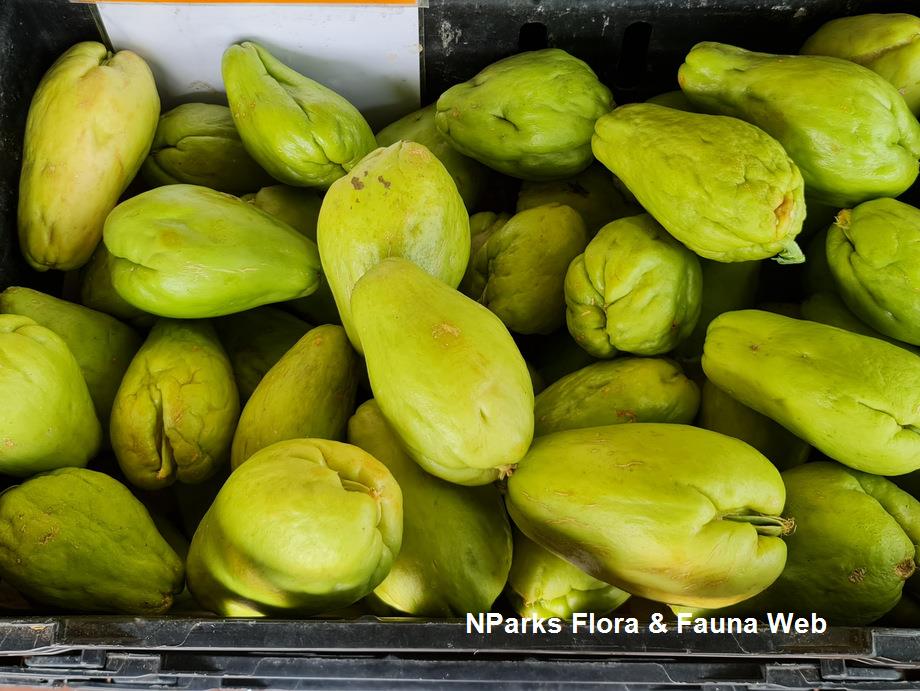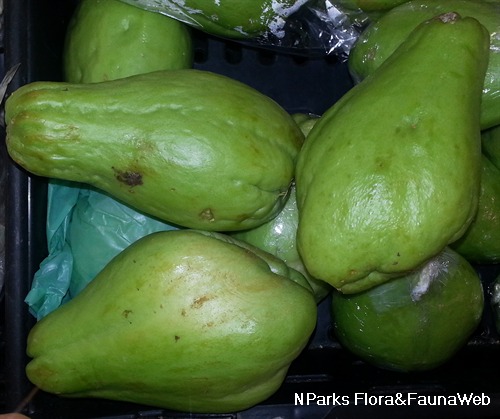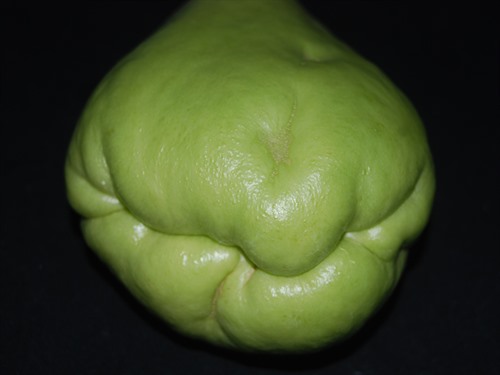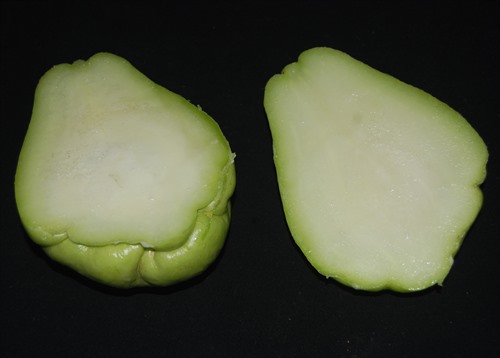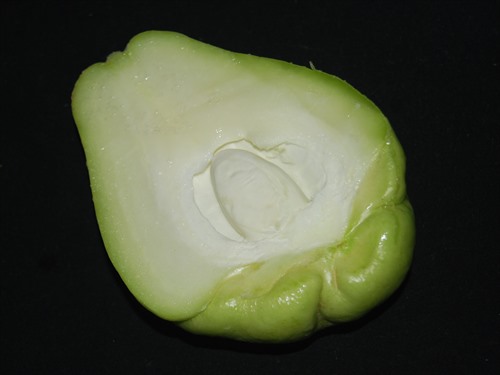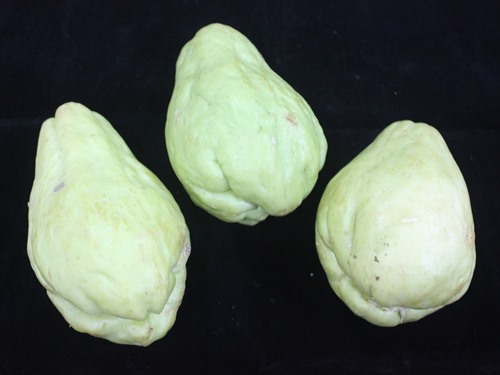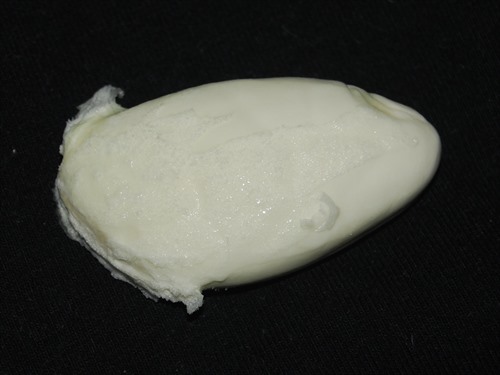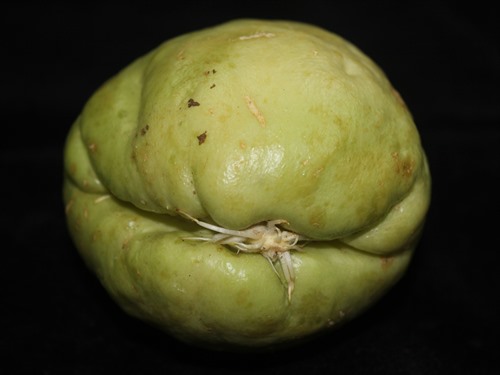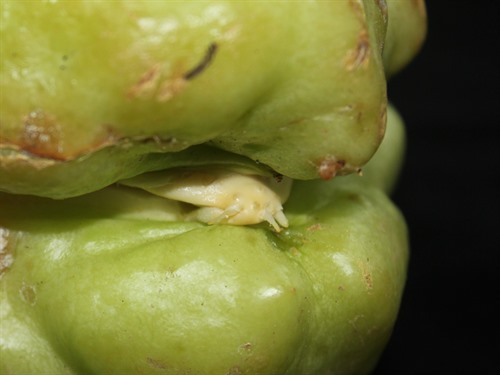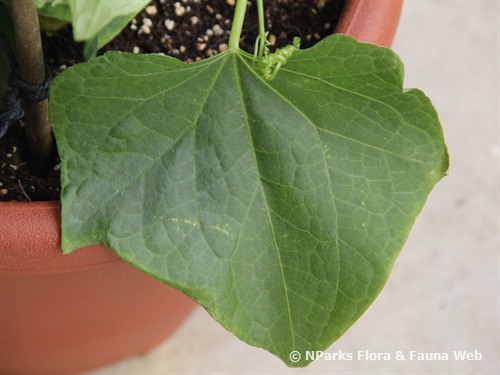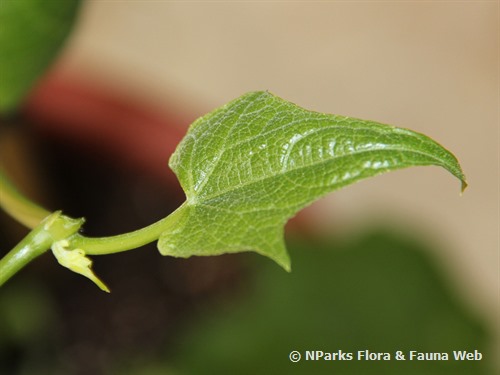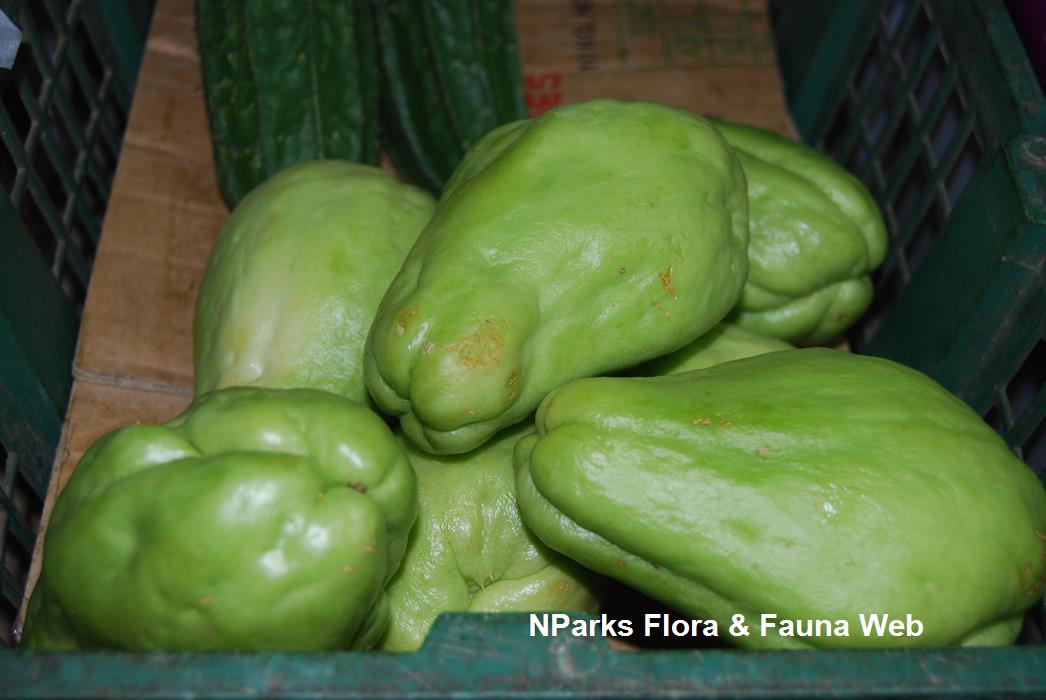
Back
Sechium edule (Jacq.) Sw.
| Family Name: | Cucurbitaceae |
| Synonyms: | Sechium americanum |
| Common Name: | Chayote, Vegetable pear, Mango Squash, 隼人瓜 |
Name
Classifications and Characteristics
| Plant Division | Angiosperms (Flowering Seed Plants) (Dicotyledon) |
|---|---|
| Plant Growth Form | Climber |
| Lifespan (in Singapore) | Perennial |
| Mode of Nutrition | Autotrophic |
Biogeography
| Native Distribution | Southern Mexico to Guatemala |
|---|---|
| Native Habitat | Terrestrial |
| Preferred Climate Zone | Sub-Tropical / Monsoonal |
| Local Conservation Status | Non-native (Horticultural / Cultivated Only) |
Description and Ethnobotany
| Growth Form | Climbing perennial vine up to 10 m long. |
|---|---|
| Roots | The vine forms a tuberous root which is edible, but less commonly eaten. |
| Flowers | The vine bears separate male and female flowers which both have nectaries at the base of the flower. The greenish to greenish-white male flowers occur in a spike-like inflorescence (10-30 cm long). The female flower is solitary or paired and occurs in the same leaf axil as the male inflorescence. |
| Fruit | Pear-shaped, but slightly flattened fruit is typically borne solitary. The most popular cultivars are light green, smooth, hairless and about 15 cm long, but there is considerable diversity among other cultivars (eg., colour, shape, folds, etc.). The fruit typically weighs 0.2-0.4 kg, but sometimes up to 0.9-1.4 kg. The skin is slightly wrinkled to deeply wrinkled, especially along the bottom edge. The white, juicy flesh has a bland to slightly sweet flavor and contains a single elongated seed. The seeds are viviparous, germinating while still in the fruit. |
| Associated Fauna | The flowers are often pollinated by Trigona bees in pesticide-free areas or honeybees (Apis mellifera) in agricultural areas where pesticides are used heavily. To a lesser extent, they are pollinated by wasps. |
| Cultivation | The seeds should be planted about 3.7 m apart from one another. The vine will require a trellis for mechanical support. Apply well rotted compost or animal manure at the time of planting, about 4 months later and when the fruits are newly formed. |
| Ethnobotanical Uses | Edible Plant Parts : Edible Fruits, Edible Leaves, Edible Storage Organs Food (Fruit or Vegetable): The chayote fruit can be eaten raw in salads or cooked in various ways. A common way to eat the fruit is to peel it, cut in thin slices and stir-fry it. The tubers of the plant are starchy and eaten like potatoes. In the Malaysian highlands, people enjoy stir-frying the leaves and young shoots. In the USA, the chayote is often pickled. In Mexico, the dried fruits are used to make jam and candies. The fruit can be stored for several weeks by wrapping it in newspaper and placing it at cool temperature (10-13 degrees Celsisus). Medicinal: Leaf infusions are used in traditional medicine to promote urination, as well as treat kidney stones and other kidney diseases, arteriosclerosis (blocking of the arteries by fatty deposits), and high blood pressure. Others: The strong, yet flexible stem fibres are used to make hats and baskets. In India, the fruits and roots are used as animal fodder. |
Landscaping Features
| Landscape Uses | Parks & Gardens, Trellis / Arbour / Pergola |
|---|---|
| Thematic Landscaping | Economic Garden |
Fauna, Pollination and Dispersal
| Pollination Method(s) | Biotic (Fauna) (Insects (Bee), Insects (Ant, Beetle, Fly, Thrip, Wasp)) |
|---|
Plant Care and Propagation
| Light Preference | Semi-Shade |
|---|---|
| Water Preference | Lots of Water |
| Plant Growth Rate | Fast |
| Rootzone Tolerance | Moist Soils, Well-Drained Soils |
| Diseases | Susceptible to root knot nematode, powdery mildew, |
| Propagation Method | Stem Cutting (Herbaceous) |
| Propagation Method Remarks | The seed dies if taken out of fleshy fruit. It can be propagated by planting whole fruit with large end slanting down. |
Floral (Angiosperm)
| Flower Colour(s) | Cream / Off-White, Yellow / Golden |
|---|---|
| Flower Grouping | Cluster / Inflorescence |
| Flower Location | Axillary |
| Inflorescence Type | Raceme |
Fruit, Seed and Spore
| Mature Fruit Colour(s) | Green - Light Green |
|---|---|
| Mature Fruit Texture(s) | Wrinkled |
| Fruit Classification | Simple Fruit |
| Seed Description | ovoid and compressed with a soft and smooth testa. |
Image Repository
Others
| Master ID | 31558 |
|---|---|
| Species ID | 5957 |
| Flora Disclaimer | The information in this website has been compiled from reliable sources, such as reference works on medicinal plants. It is not a substitute for medical advice or treatment and NParks does not purport to provide any medical advice. Readers should always consult his/her physician before using or consuming a plant for medicinal purposes. |

